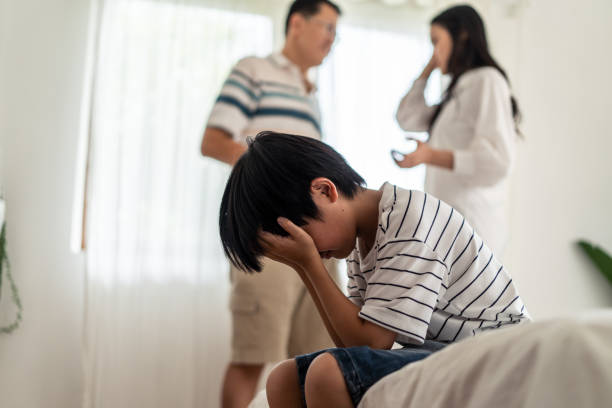 family-law
family-law
Joint Custody
Child custody refers to a parent’s authority to care for their child, and, during divorce, a judge can assign these powers between spouses as joint custody, or to only one parent in sole custody.
The division of such rights can be quite complicated, and couples should not try to resolve these matters on their own. Instead, families should work with an attorney to make sure that both the child’s best interest are being met, and that they aren’t giving up any essential rights. However, that doesn’t mean it has to be a dogfight.
Most couples find that working together to find a child custody agreement makes the whole divorce a lot easier.
But what is custody, and how does it apply to you?
Here’s a little bit about how custody is handled in California, and why you and your spouse are likely to be awarded joint custody rights.
What is Joint Custody
When you become a parent (either biologically, or through adoption), you don an invisible mantle of rights and responsibilities which are inherent to the role. For children born inside the marriage, this parental authority is shared equally and used interchangeably between spouses. However, upon divorce, these powers will need to be distributed between partners, since some responsibilities simply can’t be shared if parents aren’t living under the same roof.
To this end, judges are free to divide parental rights in one of two ways:
- Joint Custody—powers are shared between spouses, either unequally or equally; or,
- Sole Custody—when authority is given to one parent, alone.
Hence, “joint custody” refers to any situation where the judge orders parents to share parental authority, instead of assigning powers to just one spouse.
Legal and Physical Custody
In California, these custodial powers are broken down into two groups: legal and physical custody.
Legal custody refers to a parent’s right to make decisions on behalf of their child. This includes being able to make major decisions on things like health and education. It also encompasses a parent’s right to sign documents, have access to records, and the right to be able to decide what religious and cultural norms the child is exposed to.
Physical custody, on the other hand, is about where a child spends their physical time. This refers to both where the child will live, as well as visitation (which may or may not be included, depending on how your judge divides physical custody in your parenting plan).
Both of these custodial power groups (legal and physical) can be shared, jointly, or held by one parent in sole custody.
Joint Legal Custody
If you and your partner are awarded joint legal custody, this means that you share the right to make choices about your child’s health, welfare, and education. In these situations, both of you must pass off on all major decisions that require parental authority (such as surgery), and you are each granted equal access to records and information.
As a general rule, courts are loath to take away a parent’s right to choose how their child is raised. And since legal authority doesn’t necessarily require parents to live under the same roof, parents end up sharing legal custody as joint partners in the majority of California divorce cases.
Why a Judge Wouldn’t Award Joint Legal Custody
It doesn’t happen often, but in rare cases, one parent is awarded sole legal custody. This usually only happens in extreme circumstances, though, such as when:
- It’s in the child’s best interest for one parent to have exclusive rights and responsibilities;
- The parents have proven they cannot make decisions together;
- One parent is unfit; or,
- One parent is incapable of making decisions.
As you can see, most of these situations revolve around harm, which means that—short of something more serious, such as neglect, domestic violence, or criminal activity—your pleas for sole legal custody probably won’t be awarded.
In short, being a bad spouse doesn’t mean someone is a bad parent, and the only time courts do not grant joint legal custody is if doing so would hurt the child, somehow.
Joint Physical Custody
When parents share joint physical custody, this means they both have the right to have the child physically present in their homes for significant periods of time. Unlike legal custody, however, physical custodial powers have to be divided (rather than shared), since a child cannot be in two places at once. The split doesn’t have to be 50-50, though.
While it is (technically) possible for joint custody to be split 50-50, because of outside influences like work, school, extracurricular activities, and childcare arrangements, dividing a child’s time exactly equally between parents is almost impossible.
Instead, it’s much more common for the court to assign one parent to be the “custodial parent” (or rather, the child’s “primary residence parent”), while the other (the “non-custodial parent”) receives ample visitation.
Examples of Joint Custody Division
Custody and visitation can be divided any number of ways. One of the most common plans is for parents to alternate weeks, starting on a certain day. Monday is a common choice for these families (since it’s practical for school and work reasons), and in this situation, your joint custody agreement could look like this:
| Mom | Dad | |
| Week 1: Monday – Sunday | ✓ | |
| Week 2: Monday – Sunday | ✓ | |
| Week 3: Monday – Sunday | ✓ | |
| Week 4: Monday – Sunday | ✓ |
Other families might prefer to break up this “alternating week” cycle, and include a midweek visit. That way, kids and parents don’t have to go a full week without seeing each other.
If that was the case in your situation, your custody schedule might look like this:
| Mom | Dad | |
| Week 1: Sunday – Tuesday | ✓ | |
| Week 1: Wednesday | ✓ | |
| Week 1: Thursday – Saturday | ✓ | |
| Week 2: Sunday – Tuesday | ✓ | |
| Week 2: Wednesday | ✓ | |
| Week 2: Thursday – Saturday | ✓ | |
| Week 3: Sunday – Tuesday | ✓ | |
| Week 3: Wednesday | ✓ | |
| Week 3: Thursday – Saturday | ✓ | |
| Week 4: Sunday – Tuesday | ✓ | |
| Week 4: Wednesday | ✓ | |
| Week 4: Thursday – Saturday | ✓ |
There are also visitation schedules that combine every other week with every other weekend, prolonging the visit for an extra weekend each cycle. This arrangement is common during the summer, for parties who live more than twenty-five miles away from each other.
Other plans might include:
- Three days on, four days off;
- Alternating three days on, four days off;
- Two weekends a month;
- Alternate weekends plus two weeks during summer;
- Every other holiday; or even,
- All time when the child isn’t in school.
This is by no means an exhaustive list. The number of combinations and options available to couples are extensive, and ultimately, the type of joint custody agreement you and your ex-spouse work out will be up to you. After all, only you know what’s best for your family.
Couples who are interested in having more flexibility in drafting this arrangement, however, should try to avoid divorce litigation. Instead, consider an alternative method of dispute resolution, such as mediation or collaborative divorce.
Your Stockton family law attorney can help you figure out what parenting time agreement will work best for your unique situation.
Do You Need to Talk to a Lawyer About Child Custody?
At Maples Family Law, we welcome the opportunity to answer your questions about divorce and issues such as custody, child support, spousal support, and the divorce process.
Call us at (209) 989-4425 for a divorce case review with an experienced Stockton divorce lawyer, one who can give you the advice you need to begin moving forward.








